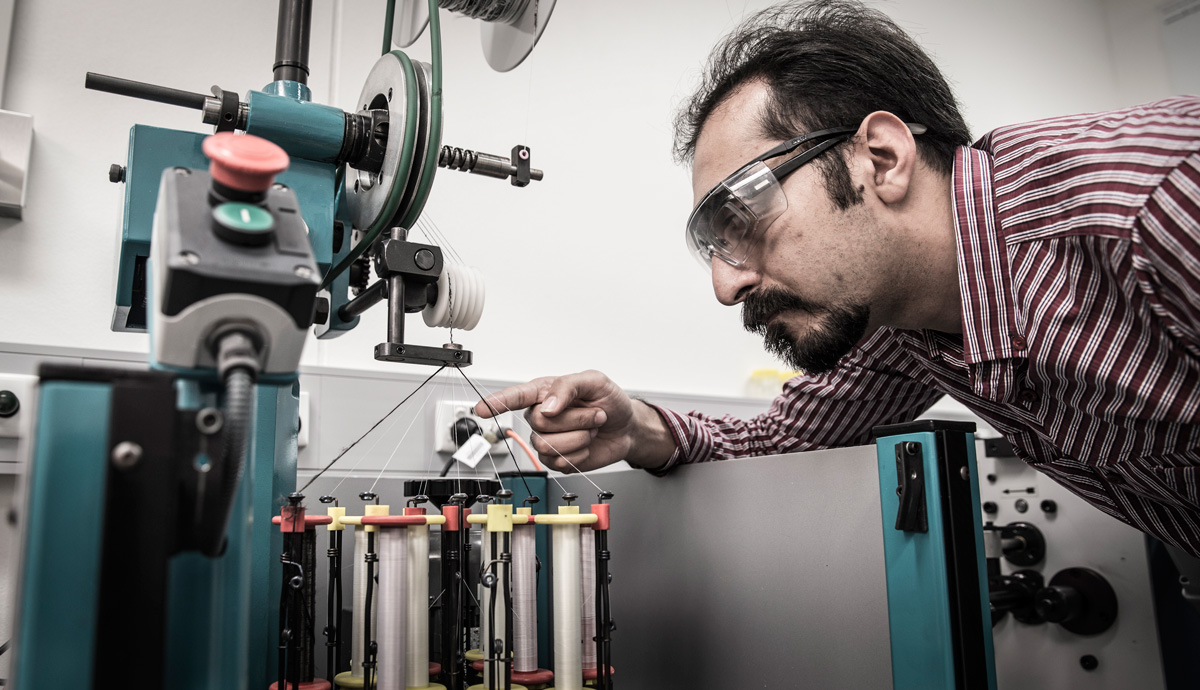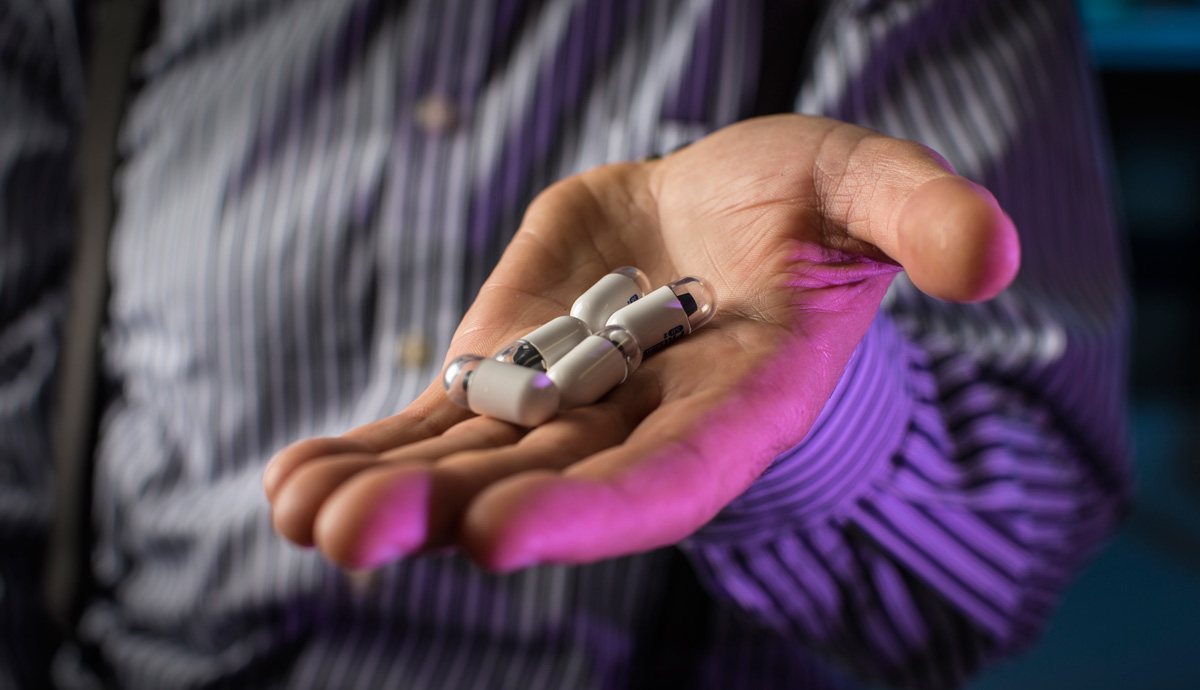October 21, 2015
Liquid body armour to printed body parts: UOW research ahead of its time
We don’t yet have a flying car or hoverboards, but UOW is developing a range of new technologies that would make Doc Emmett Brown exclaim “great Scott!”
Wednesday October 21 2015 is Back to the Future Day, the date Marty McFly and Doc Brown time-travel to in the 1980's movie ‘Back To The Future II’.
The film imagined 2015 was a world of flux capacitors, hoverboards and self-drying jackets. While mostly the stuff of science fiction rather than science fact, 40 years of research at UOW has led to some eerily similar ideas in science and technology.
Here’s a small sample:
3D bio-printing
UOW has been pushing boundaries in 3D printing ever since Professor Gordon Wallace and his team at the Intelligent Polymer Research Institute (IPRI) came back from Officeworks with an inkjet printer to pull apart.
Warranty voided, no doubt, but what they achieved was one of the first ‘bio-inks’, which enables them to print living cells. Fast forward a few years and researchers are honing the technique to print custom prosthetics and biocompatible implants with drug delivery and nerve regeneration properties.
Yes, printing parts for bodies is on the agenda. In fact, they pretty much wrote the book on it. The printers themselves have been custom designed to accommodate combinations of materials and achieve design complexity that is turning engineering design principles head over heels.
Talking textiles

This nifty development requires a bit of mental gymnastics: we need to go back to the past to see the future. Knitting machines. Chances are you’ve not used one and that’s fine. But the science behind producing textiles is a major part of a field of materials science called wearable technology.
Researchers at the UOW-headquartered ARC Centre of Excellence for Electromaterials Science (ACES) have incorporated advanced fibres that act as human movement sensors into fabrics with the help of traditional knitting machines (industrial size, not your grandmother’s needles) and a process called wet spinning.
Now they can monitor human movement, which would be very useful for sports training or rehabilitation following injury.
Liquid body armour

In 2015 Marty McFly was sporting a self-drying jacket, which is nice, but it’s got nothing on a fluid that hardens on sudden impact and could be used in body armour. While walking on water and a liquid that can stop a bullet sound like the powers of comic book superheroes, it’s thanks to ground-breaking new solutions involving shear thickening fluids.
Dr Tongfei Tian, an Associate Research Fellow at UOW’s Faculty of Engineering and Information Sciences, and Professor Weihua Li have been playing with these fluids. They are a mixture of particles and liquid that suddenly harden within milliseconds of impact and return to liquid state once the force is removed.
In addition to liquid body armour, the researchers have used the fluid as an electrolyte in batteries. They harden on impact and resist crushing to protect the battery as well as have higher conductivity than current electrolytes used in batteries.
Their secret sauce recipe is secret, don’t bother asking.
Robo-drugs

Using magnets and a clever positioning system, a team of UOW researchers led by Professor Gursel Alici, Head of the School of Mechanical, Materials and Mechatronic Engineering, is developing a capsule that can be magnetically “driven” through the body to examine a patient's gastrointestinal tract and deliver drugs directly at the treatment site.
Current endoscopy procedures involve inserting a long flexible tube with a camera lens on one end into a patient’s body. The new robo-capsule will allow physicians to screen and treat gastrointestinal tract diseases including internal bleeding, Crohn’s disease, small bowel tumours and coeliac disease in a non-invasive and hopefully much less painful way.
The system is wireless, clean and site-specific drug delivery limits the side-effects on the body.
Electric cars
Granted, a Hyundai Getz does not quite have the cool factor of a DeLorean, but bear with us here. This humble little hatch houses a revolutionary battery pack and management system that is helping make electric vehicles a reality.
The battery technology is just one field being examined by the team at the Institute for Superconducting and Electronic Materials (ISEM). It'll have enhanced cycle life, low cost, short charging times and high capacity, which are fundamental in realising reliable electric vehicles.
Inside the car (we don’t know if the researchers have named it but they should), there’s an innovative energy management system that helps regulate the energy use and on-board charging to get the best out of the new batteries.
This research program has already driven breakthroughs in this area and will ultimately help solve transport challenges related to the shift away from fossil fuels.
And the space-time continuum won’t be torn when it hits 88 miles per hour.
There are more developments - artificial muscles, new cancer radiation treatments, for example - but for now, set the dial, we’re coming home Doc.
